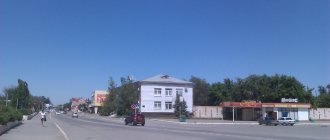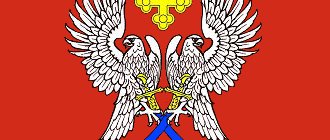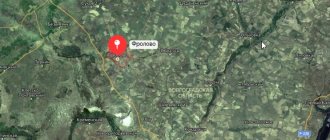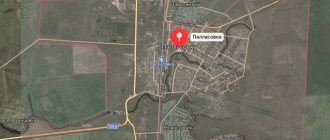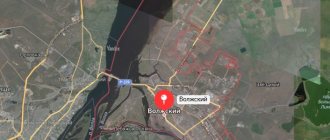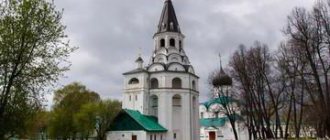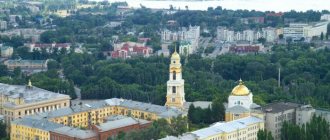Serafimovich, Volgograd region. History and modernity. Interesting Facts.
There are not many real oases of Don Cossack culture left in our country, and one of them is the city of Serafimovich, Volgograd region.
The local population sacredly preserves the military traditions of their ancestors, who defended the fatherland for centuries. In the city itself, little has changed since those times - there are many brick houses with one or two floors, which are more than a hundred years old. The architecture of the Cossack village has been carefully preserved, and the townspeople themselves do not forget about the customs and morals of the Cossacks. The area is included in the country's cultural heritage list.
Serafimovichsky district is a territorial unit with an administrative center in the city of the same name. It includes 15 municipalities, with 14 rural settlements and one urban. The total number of settlements in the region is 73.
Fate after the revolution
After the October events, the monastery existed until 1928. Then it was closed. Several nuns were persecuted. As Polyakova’s teacher Tamara Vladimirovna recalled, the remaining nuns were able to organize a “rural commune” and buy a house. There they lived, prayed, and earned money to feed themselves.
At first, 400 inmates of the children's colony were housed on the territory of the monastery. Later, the headquarters of General Vatutin was located here during the Great Patriotic War (1942 - 1943). Serafimovich (the convent of the Volgograd region received serious damage during heavy fighting) was significantly destroyed in the Battles of Stalingrad.
During the years of Soviet power, the Kazan Cathedral housed a pioneer camp, a grain storage warehouse, and a poultry farm. Later, a power plant was built there, which was dismantled in the most barbaric way by the end of the 60s. The unique structure was blown up, only the walls and marble columns of the building were preserved.
Location
This small town covers an area of only 30.6 square meters. km. Its location is on the banks of the Don, in the northwestern part of the region, 260 km from Volgograd. From different sides, the Serafimovichsky district is surrounded by other regional districts, and only in the west it borders on the Rostov region. Since the area stretches along both banks of the Don, the Don ridge is located on the right bank, and the Archedinsko-Don sands are located on the left.
The local land is rich in natural reserves - there are gas and peat deposits, sources of underground fresh water, deposits of construction sand and raw materials for the production of ceramic bricks and expanded clay.
Serafimovich has transport connections with many settlements in the region and large cities - buses depart from here to Volgograd and Moscow, Surovikino, Mikhailovka, Frolovo, Log, etc. One of the most beautiful places on the high Don bank is occupied by the “Serafimovich pearl” - Ust-Medveditsky Spaso- Transfiguration Monastery.
Stone plate
In one of the caves, the nuns discovered an unusual stone on which there are prints of women's hands and knees. The first legend says that the traces were left by Mother Arsenia. The surface of the stone melted from her fervent prayer. According to the inhabitants of the monastery, they belong to the Mother of God herself.
Soviet scientists studied the stone in the 70s. Their findings were unexpected. The dents on the surface are actually melted. They also were unable to determine the chemical composition of the slab. It's like she's of extraterrestrial origin.
The stone slab is believed to have healing properties. Anyone who touches it with their lips or forehead with sincere faith, hope, and prayer will receive deliverance from the disease. It especially helps women suffering from infertility.
Population
Since 1939, the population of the area has been more than 20 thousand people. It reached its maximum in the 70s, crossing the threshold of 30 thousand people. Then it decreased slightly, but overall remained stable. At the moment it has about 23 thousand inhabitants. Of 1,117 Russian cities, Serafimovich ranks 969th in terms of population. About 38% of the total population of the district live directly in the district center. More than 90% of them are Russians, partly the national composition is represented by Ukrainians and Uzbeks.
Caves
The origin of the caves has two versions. According to one of them, on July 10, 1874 (the day of memory of Anton of Pechersk), Abbess Arsenia personally began digging caves. Three nuns (Agniya, Victorina, Nikodima) helped her. The work lasted 13 years.
The abbess wanted to build an underground temple in them. Unfortunately, I didn’t have time. She called the main passage of the caves “The Way of the Savior’s Cross.” The second passage was given the name “Passionate Path of the Mother of God.” In the 30s of the last century, several people wanted to explore the caves. They didn't come back. The authorities decided to fill them up. After 40 years, the blocked entrances were dug up again.
The total length of the underground corridors is about 165 meters. At the moment, visitors can move along them no further than 50 m (to the room where the stone block is located). In the caves the air temperature is always the same all year round – +8°. The entrance begins from the church vestibule of Arseny the Great (in the lower part of the Kazan Cathedral).
According to many archaeologists, historians the caves appeared much earlier. Therefore, it was not by chance that the site for the construction of the Kazan Church was chosen. It is located directly above the entrance to the dungeon. Mother Arsenia only improved the underground galleries: she strengthened the vaults, walls, and floors.
Story
The history of the region is closely connected with the Don Cossacks. About 400 years ago, a station was formed on the left bank of the Don. Ust-Medveditskaya. There were picturesque meadows for grazing cattle, and there was also a lot of fish. During the summer, cattle were driven to the right bank, and special bases were even built there. This name still remains to designate the lower part of the city.
In 1802, Ust-Medveditskaya received the status of a village in the district of the Don Army. Fairs were held here in summer and winter, where literally everything was sold. Agriculture developed intensively. Wealthy Cossacks were among the first Russians to use technological innovations - seeders, mowers, and so on.
In the prosperous village there were several small brick factories, a convent, parochial schools, a women's Mariinsky School, two gymnasiums - for men and women separately, four churches and schools for crafts and military purposes.
The Civil War passed almost unnoticed in these places. Soviet power was established peacefully, without bloodshed, at the end of 1917. In the fall of 1918, the Ust-Medveditsky district was captured by Ataman Krasnov, a year later his troops were defeated, but within a year the bandits hiding in the steppes had to be eliminated.
In 1921, the district began to belong to the Tsaritsyn province. The government changed - the laws changed, and the Cossacks were recognized on an equal basis with other peasants - natives and newcomers; they were no longer a privileged class. The emergence of Komsomol cells in settlements occurred in 1920.
In 1928, the Ust-Medveditsky district was formed, which included several villages and adjacent farmsteads - a total of 41 village councils. In 1929, the first collective farms began to be organized, and in 1930 they were already in every locality. Technical stations appeared, and the professions of tractor driver, agronomist, and mechanic became popular. Thanks to technology, by the end of the 30s, many successes had been achieved in the economy; the sown area, compared to 1913, increased by 1.5 times, and the yield doubled. Gardening also developed; in 1934, a nursery was founded; pears, cherries, apple trees, and grapes were grown here.
In 1921, a professional intern club opened, there were already many Komsomol clubs in the village, and reading huts were popularized. The transformations, to a large extent, were associated with A.S. Serafimovich. The writer's real name is Popov. He lived in St. Ust-Medveditskaya from 1874 to 1883, while he was a high school student, and then from 1890 to 1892, when he returned from exile to the city of Mezen, Arkhangelsk region. Since 1933 A.S. Serafimovich often came here and stayed for a long time; a memorial museum is now located in his house.
The renaming of the village to Serafimovich in 1933 was timed to coincide with his 70th anniversary. The writer took care of the improvement of the city. There were three schools, an orphanage, a library, and children's art centers here.
A cultural center was opened in the area, streets were landscaped, parks were planted, some streets were covered with cobblestones, Oktyabrskaya Street was filled with asphalt.
With the arrival of the Germans in these parts, life became completely different. The male population went to the front. In August 1942, the Nazis occupied Serafimovich, but stayed here for several weeks, and then this important bridgehead was liberated at the cost of thousands of lives of Soviet soldiers. And from here, on November 19, the legendary Stalingrad offensive began. Since those times, the Chepelev Kurgan has remained “202 high,” where a 4-sided pyramid now stands as a monument. Eight natives of these places received the title of Hero of the Soviet Union.
After the war, Serafimovich had a hard time recovering, new gardens and parks were gradually laid out, a water supply system and a power plant began operating, and agricultural work was in full swing. Farms for breeding poultry and livestock were created, and by 1950 this industry was not only restored, but also improved the indicators of the pre-war level.
In 1984, the bridge across the river was inaugurated. Don. It became a reliable reinforced concrete structure. Cultural sites were opened in the city, many monuments to soldiers were erected. Now there are medical and educational institutions, trade, food and consumer services facilities here. Agriculture is considered the main economic sector.
Architectural features
Serafimovich (the convent of the Volgograd region has buildings of unique architecture on its territory) is attractive for tourism. First of all, it is famous for the Kazan Church. It was built in the Russian-Byzantine style. The cathedral has the shape of a cross, upper and lower parts. Below is the church named after St. Arseny the Great, built in 1888.
The Kazan Cathedral is distinguished not only by its unusual architecture on the outside. Inside it there are beautiful columns decorated with capitals. Marble for them was ordered from Italy. They were made in the St. Petersburg workshop of the sculptor Andrei Andreevich Barinov. The temple is quite spacious. It can accommodate up to 5,000 people.
The Church of the Transfiguration of the Lord was created in the Baroque style. It is decorated with 33 domes (the number of Christ's earthly years). They are installed in 4 tiers. There are 8 chapters on the three lower ones, 1 crowns the top. Inside the vaults are painted with colorful frescoes.
Other buildings are more modest:
- Bell tower;
- gate church - consecrated on July 20, 2015 in honor of St. Nicholas the Wonderworker;
- Chapel named after Seraphim of Sarov;
- abbot's house;
- belfry in the shape of an arch;
- guest house.
Weather
The climate of Serafimovich is moderate, the winter here is quite long and moderately cold. In summer the weather is very warm, but this period does not last long here. But in warm weather, Volgograd residents and guests from other cities like to relax here.
Therefore, recreation centers were built. Guests enjoy horseback riding and kayaking trips. Fishing deserves special attention - its lovers come here literally all year round, because the bite here is simply excellent.
Grotto
Serafimovich (the convent of the Volgograd region has another underground monument, but of natural origin) is of interest to all lovers of unusual historical places.
The grotto was dedicated to the Georgian saint Shushanika (Susanna), who courageously endured suffering for the sake of faith. The entrance there is partially covered with earth. The nuns plan to reconstruct it to give tours.
Job
There are only a few job offers in Serafimovich. Almost all of them relate to the trade sector. You can also find vacancies for work on a rotational basis. For example, according to advertisement No. 1997786062 in Sochi, an employee with a private security guard certificate is required to work as a security guard.
The work schedule is variable with the ability to choose, food and accommodation are provided free of charge, responsibilities include maintaining the customer’s property and access control. Salary – 46 thousand per month + bonus.
Arch belfry
Once upon a time there was a stone church from the 18th century on this site. In 1934 it was blown up, only the arc-shaped structure remained. The architectural monument was converted into a belfry.
The portal was equipped with a crossbar and 7 bells were installed. The upper part of the arch was decorated with two azure domes. They are crowned with a pointed spire.
Tomb of the Seven Nuns
In 2014, the remains of former nuns were reburied on the territory of the Ust-Medveditsky Monastery. The sisters stayed at the monastery until 1928.
Their names:
- Animanida;
- Afanasia;
- Barsononthia;
- Euphalia;
- Euphrasia;
- Hope;
- Raisa.
Visiting conditions
It is necessary to choose clothes that comply with church rules. Women wear long skirts and dresses (length below the knees), the top must be equipped with long or ¾ sleeves.
The head is covered with a headscarf, scarf, scarf, or hat. Men are not allowed to wear T-shirts or shorts; shirts, T-shirts, and trousers are allowed.
It is recommended to take water and food for a snack. However, the monastery has a refectory for pilgrims. They feed you there for free for the glory of God or leave a donation (optional).
It is allowed to film and photograph buildings and attractions in the vicinity of the monastery so that the inhabitants of the monastery do not get into the frame (not inside temples, caves). When visiting a holy place, you must treat it with respect and reverence.

